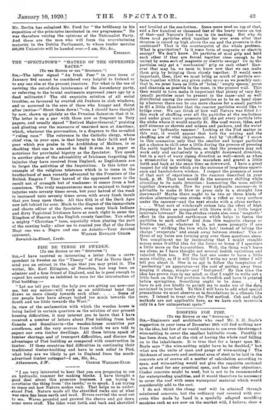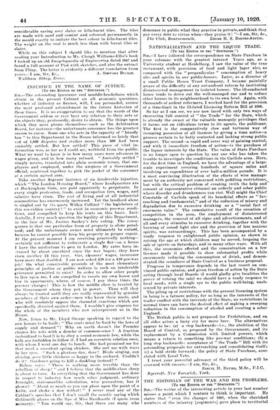ROOFING FOR PISE.
Pro TIM EDITOR Or THE " SPECTATOR.") SIR,—Engineers and architects who read Mr. S. II. Boyle's suggestion in your issue of December 20th will find nothing new in the idea, but few of us would venture to use even theatrongest wire-netting to cover the smallest habitable room. Possibly it has been done, but at the risk of having the whole roof falling on to the inhabitants. It is true that for a larger span Mr. Boyle says "the wire-netting might have to be doubled," but what are the units of span and gauge of wire-netting ? The thickness of concrete and sectional area of steel to be laid in the concrete are of course all a matter of calculation according to span, and wirenetting would not give .the requisite sectional area of steel for any practical span, and has other objections. Cinder concrete might be used, but is not to be recommended for waterproofing qualities, and it would therefore be necessary to cover the roof with some waterproof material which would considerably add to the cost.
I do not think the cheap roof will be attained through reinforced concrete, but the ordinary roof covered with con- crete tiles made by hand in a specially adapted moulding machine such as are now on the market will, I believe, show a
eonsiderable saving over slates or kiln-burnt tiles. The tiles are made with sand and cement and coloured permanently in the mould exactly to imitate the hest colour in kiln-burnt tiles. The weight on the roof is much less than with burnt tiles or slates.
While on this subject I sitpuld like to mention that after reading your Introduction to Mr. Clough Williams-Ellis's book I looked up an old Encyclopaedia of Engineering dated 1847 and found a full account of Pis s5 with sketches, and also the extract from Pliny. The latter is evidently a different translation from



































 Previous page
Previous page